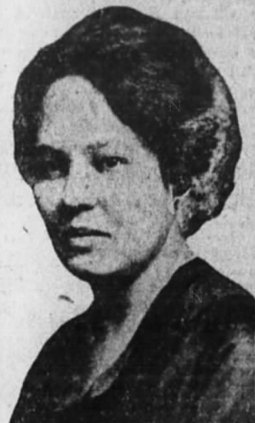Cecelia Cabaniss Saunders facts for kids
Cecelia Cabaniss Saunders (born in 1879, died in 1966) was an important African-American civil rights leader. She led the Harlem, New York YWCA (Young Women's Christian Association). She is known for fighting against unfair treatment based on race, especially during World War II. She worked hard to create more job training and opportunities for African-American women. She also spoke out against police violence in Harlem.
Early Life and School
Cecelia Hayne Holloway was born in Charleston, South Carolina in 1879. Her father, James Harrison Holloway, was a harness maker and a school principal. Her mother was Harriet Huger Holloway.
Cecelia went to the Avery Normal Institute. She then studied at Fisk University and graduated in 1903. Later, she took graduate classes at Columbia University and the New School for Social Research.
Making a Difference: Her Career
When she was young, Saunders taught at South Carolina State University.
In 1914, Saunders became the leader of the Harlem YWCA. In this role, she helped many African-American women become strong leaders. Some of these women included Elizabeth Ross Haynes, Anna Arnold Hedgeman, Dorothy Height, Ella Baker, and Eunice Carter.
When Saunders started, the Harlem YWCA was in a small house. By the time she retired in 1947, it was a large building with over 100 employees. She added housing for women and summer camps. She also started a trade school there. This school trained African-American women for jobs. She believed that good training was key to overcoming unfair barriers in the workplace.
As the YWCA director, Saunders spoke about the challenges in Harlem. She often talked about how women faced racial discrimination at work. In 1935, she spoke to the mayor's group about these issues. Her work was very important in helping the YWCA system become more racially integrated in 1946.
In 1939, Tuskegee Institute gave her an honorary Master of Science degree. The New York Age newspaper praised her work. They said that when the history of Harlem from 1914 to 1947 is written, Cecelia Cabaniss Saunders would be a star.
Her Life and Legacy
Cecelia Holloway married twice. Her first husband was Dr. James E. Cabaniss. She married him in 1912, but he passed away within a year. She married her second husband, John D. Saunders, in 1915.
Cecelia Cabaniss Saunders died in 1966. She was 86 years old. Her work greatly improved opportunities for African-American women.


